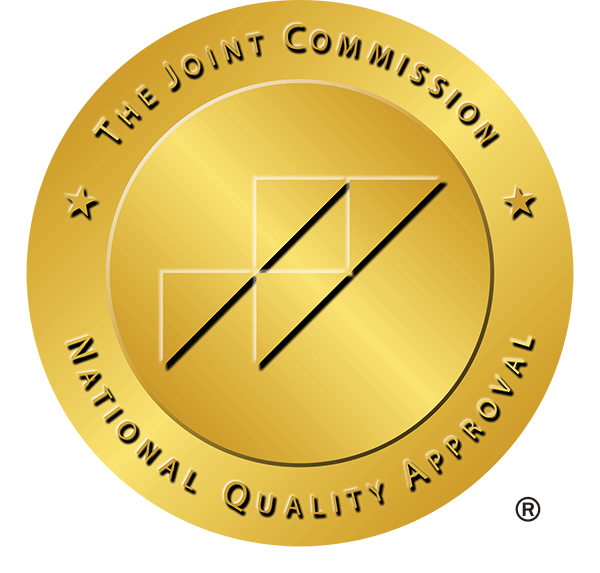Table of Contents
What is Methamphetamine?
Methamphetamine is a highly addictive stimulant that targets the central nervous system. Derived from amphetamine, methamphetamine has numerous negative impacts that generally last longer and are more harmful to the human body than amphetamine. Meth is an incredibly addictive substance and has a high potential for substance abuse. Because of its addictive qualities, recognizing meth addiction signs is incredibly important.1
What Does Meth Look Like?
Meth vs Crystal Meth
While they may appear different, meth and crystal meth are made from the same substance. Meth generally refers to the powdered substance, while crystal meth describes the larger rocklike structures. Crystal meth is the more potent of the two and has a half-life of between six and fifteen hours.
Details Regarding Meth
Drug Schedule
A drug schedule refers to the category that the Drug Enforcement Administration (DEA) uses to classify a certain substance. Because methamphetamine has the potential to be highly addictive and may lead to psychological dependency, it is classified as a Schedule II substance.5
Drug Class
Methamphetamine belongs to the stimulant drug class. Stimulants impact the body by increasing alertness and making an individual feel like they have more energy. Other common side effects of stimulants include:4
- Euphoria
- Increased confidence
- Rapid heartbeat
- Reduced appetite
- Increased sexual arousal
- Mood swings
- Anxiety
- Dehydration
Street Names
- Batu
- Bikers coffee
- Black beauties
- Chalk
- Chickenfeed
- Crank
- Crystal
- Glass
- Ice
- Poor man’s cocaine
- Speed
- Trash
- Tweak
- Uppers
- Yaba
- Yellow Barn
Is Methamphetamine Addictive?
Methamphetamine is a highly addictive stimulant. In fact, it alters the brain’s reward center and can disrupt the normal pathways that the brain uses to tell the body that something is pleasurable.
When an individual stops taking math, the withdrawal symptoms can include anxiety, fatigue, depression, and intense drug cravings. Generally, this type of addiction is treated with cognitive behavioral therapy and other motivational incentive therapies.7
How is Meth Used?
Meth can be used in a variety of ways. It can be smoked, snorted, injected, or orally ingested. However, the preferred method of using this drug generally varies by geographical region and tends to change.
- Snorting Meth: Snorting meth refers to breathing in the substance through one’s nose.
- Shooting Up Meth: Shooting up this drug refers to injecting it into the bloodstream. This method is generally the quickest way to get methamphetamine into the body and results in the most intense rush and high. Even so, the rush only lasts for a few minutes.
- Smoking Meth: Smoking meth is also a quick way to get the substance into the bloodstream. Like injection, smoking the drug will provide an intense rush almost immediately and then fades away.
Signs of Methamphetamine Use
When looking for meth addiction signs, it is vital to monitor your loved one’s behavior and check to see if they have been acting differently. Meth addiction signs may include:
- Feelings of being overwhelmed with stress or problems
- Not expressing emotions
- Isolation from family and friends
- No longer attending recovery support meetings or participating in meth addiction treatment
- Focusing on another person’s problems instead of one’s own
- Poor habits of self-care
- Not getting enough sleep
- Poor eating habits
- Thinking or talking about people in places that are associated with meth use
- Minimizing the consequences of meth use
- Talking about the good times associated with drug use
- Justifying reasons to use
- Looking for opportunities to use or be around the drug
- Meth cravings
Meth Mouth
One of the most common meth addiction signs is “meth mouth.” Individuals who repeatedly use this drug may have rotted “meth teeth” and other severe dental problems.7
Meth Sores
Meth sores are open wounds that may be found around the individual’s body. When someone is using this substance, they may get a feeling that “bugs” are crawling around on their skin, or their skin may be itchy. When this happens, that individual may scratch their skin to try to dispel the itch.7
What Does Meth Smell Like?
Methamphetamine can be odorless, but it also may give off a faint odor. Typically, individuals who have smelled this drug describe it as a similar smell to paint thinner, ammonia, and ether.
Methamphetamine Side Effects
There are many side effects that people who use methamphetamine can experience. Typically, the side effects are divided into two types: short-term and long-term meth side effects.

Short-Term Effects
Because methamphetamine is such a potent drug, even a small amount can elicit significant side effects. In addition, these side effects may appear immediately if someone is injecting the drug, but they may take a few minutes to appear if someone is taking the drug by using other means. The short-term meth side effects generally include:
- Increased attention
- Decreased fatigue
- Increased activity, feeling awake, decreased appetite
- Euphoria
- Rapid or irregular heartbeat
- Increased blood pressure
- Hyperthermia
- Increased respiration
Long-Term Effects
For people who suffer from meth addiction, long-term side effects may be present. These side effects can have drastic impacts on the body both physically and psychologically. Depending on how much methamphetamine an individual uses, side effects may be even worse.
Furthermore, chronic use can make structural and functional changes to an individual’s brain and alter the memory, emotion, motor control, and verbal learning sections of the brain.
Some of the long-term side effects include:
- Psychosis
- Changes in brain structure and function
- Deficits in thinking skills
- Deficits in motor skills
- Memory loss
- Aggressive or violent behavior
- Disturbances of mood
- Dental problems
- Weight loss
- Distractibility
The Dangers of Meth Use
Meth Psychosis
Meth psychosis can be a symptom of withdrawal. Psychosis generally consists of hallucinations, which are when someone sees, hears, and feels things that are not truly there. Psychosis may also involve delusions, which is when someone has difficulty distinguishing what is real and what is not. Psychosis may also relate to meth sores.8
Meth Overdose
For those who chronically use methamphetamine and suffer from addiction, an overdose can occur. Because overdose can be fatal, it is essential to learn the addiction signs. If you or someone you know recognizes any of the following symptoms, call 911 immediately.
Some symptoms to watch regarding meth overdose include:9
- Difficulty breathing
- Chest pain or confusion, like signs of a heart attack or stroke
- Seizures
- High or low blood pressure
- High body temperatures, also known as hyperthermia
- Kidney failure
- Stomach pain
- Changes in personality or alertness
- Lost consciousness
- Aggressive behavior
- Paranoia
Meth Withdrawal
If someone suffers from meth addiction and decides to quit or decrease their drug dosage, they may go through withdrawal. The withdrawal period is when the drug is leaving an individual’s body. During this time, several physical and psychological symptoms can occur.
While symptoms may differ depending on the person, some of the more common meth withdrawal symptoms that can occur include:10
- Dehydration
- Headaches
- Muscle pain and spasms
- Appetite changes
- Intense cravings
- Psychosis
- Fatigue
- Insomnia
- Depression
- Irregular sleep patterns
- Cravings for methamphetamine
- Anxiety
- Cognitive issues
Resources
- https://www.drugabuse.gov/publications/research-reports/methamphetamine/what-methamphetamine
- https://www.dea.gov/sites/default/files/2020-06/Methamphetamine-2020_0.pdf
- https://www.ncbi.nlm.nih.gov/books/NBK430895/
- https://adf.org.au/drug-facts/stimulants/
- https://www.dea.gov/drug-information/drug-scheduling
- https://www.dea.gov/sites/default/files/2020-06/Methamphetamine-2020_0.pdf
- https://www.drugabuse.gov/publications/drugfacts/methamphetamine
- https://www.verywellmind.com/what-to-expect-from-meth-withdrawal-22358
- https://www.webmd.com/connect-to-care/addiction-treatment-recovery/methamphetamine/signs-of-a-meth-overdose-and-what-to-do
- https://www.webmd.com/connect-to-care/addiction-treatment-recovery/methamphetamine/meth-withdrawal-help




